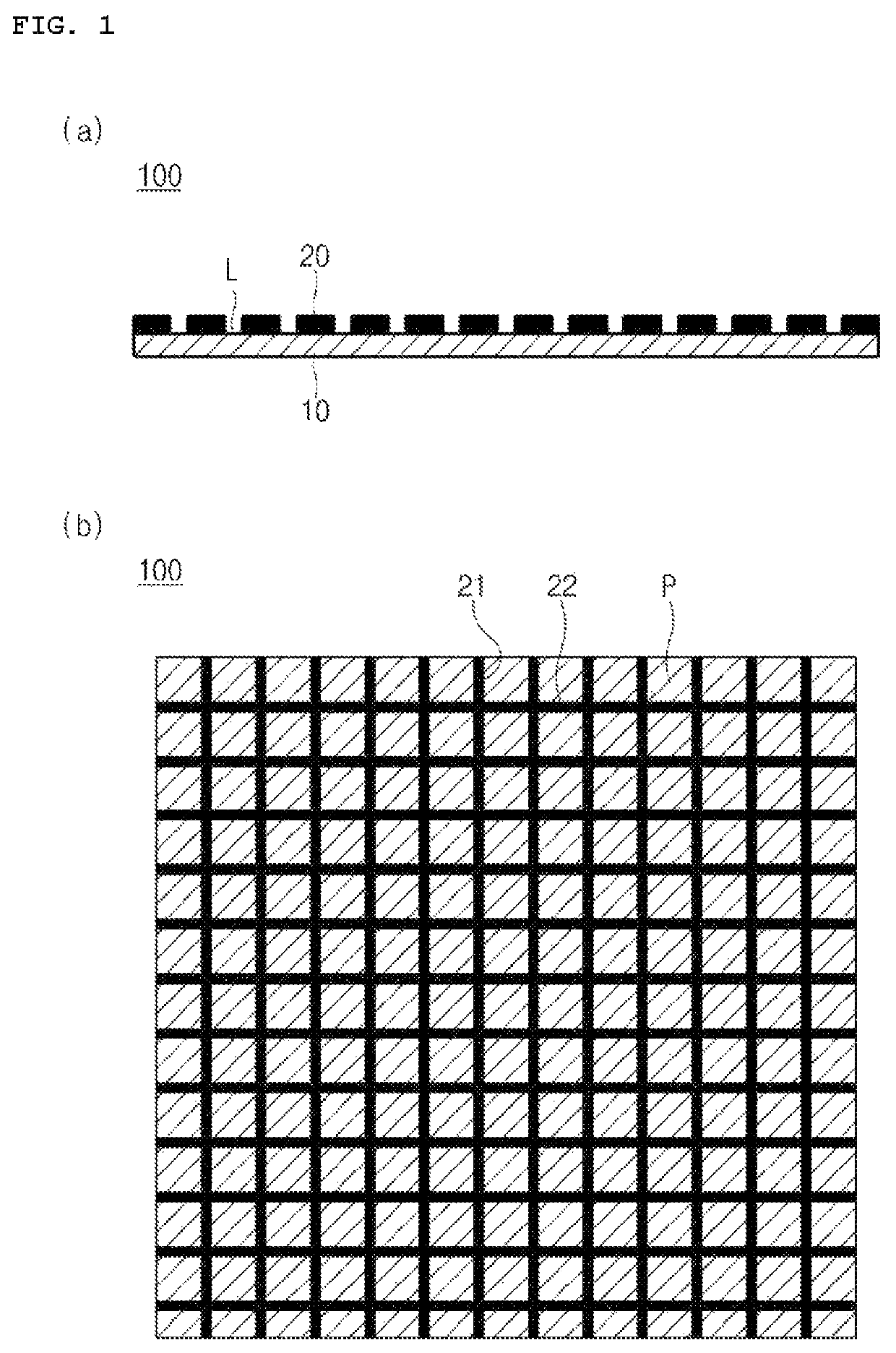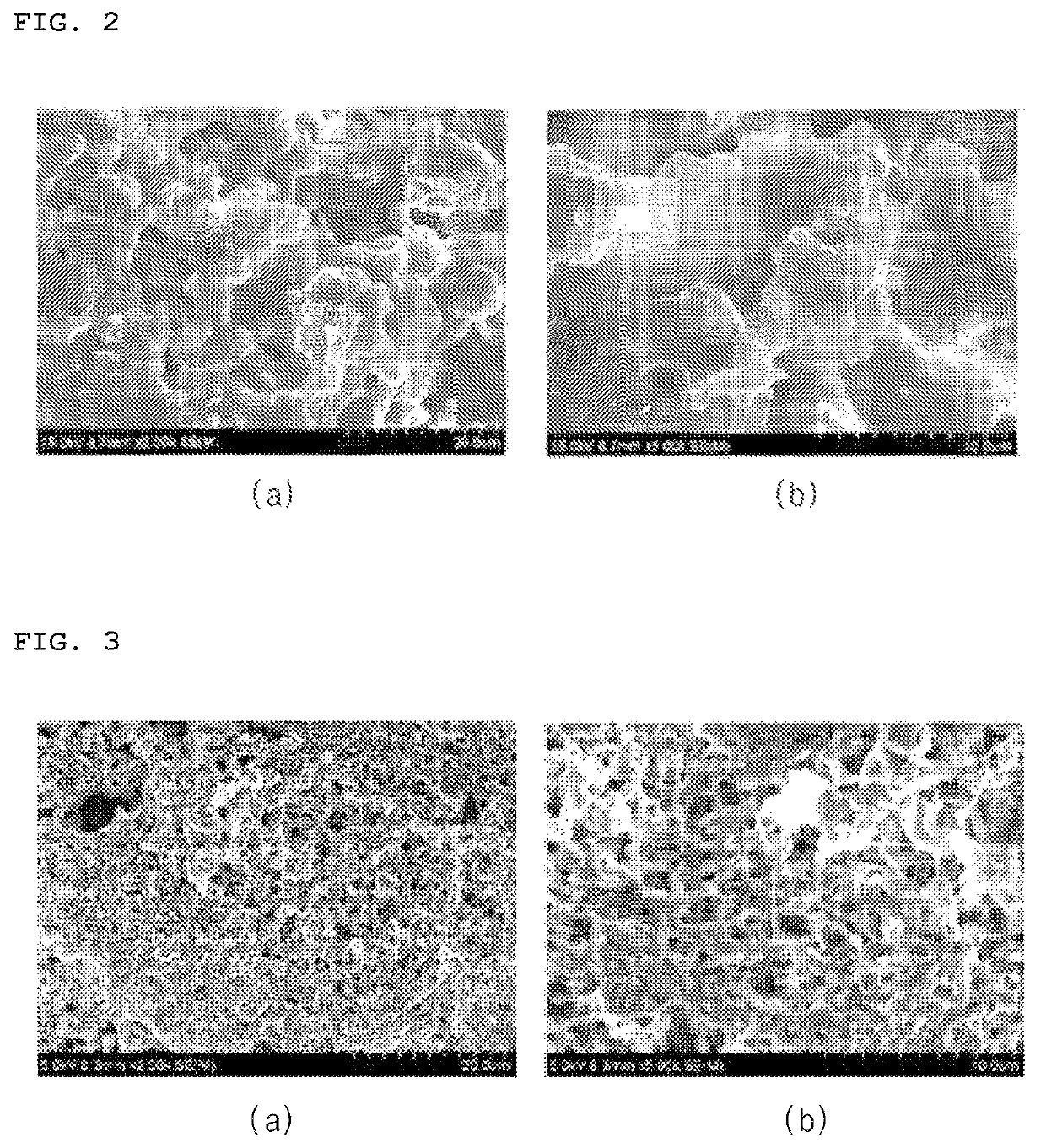Negative electrode for lithium-metal secondary battery and lithium-metal secondary battery including the same
a secondary battery and negative electrode technology, applied in secondary cell servicing/maintenance, cell components, sustainable manufacturing/processing, etc., can solve the problems of volume expansion during charging/discharging, performance degradation, and a gradual decrease in capacity and energy density, so as to suppress the formation of irregular resin phases, uniform current density, and excellent life characteristics
- Summary
- Abstract
- Description
- Claims
- Application Information
AI Technical Summary
Benefits of technology
Problems solved by technology
Method used
Image
Examples
example 1
[0068]1) Manufacturing of Negative Electrode
[0069]While a lithium thin film having a thickness of 150 μm served as a positive electrode and a nylon mesh served as a negative electrode, a polyolefin separation membrane was interposed between the lithium thin film and a polymer, and then, a coin-type half cell was manufactured by injecting an electrolyte in which 1 M of LiPF6 was dissolved a solvent in which ethylene carbonate and ethylmethyl carbonate were mixed with a volume ratio of 50:50. Subsequently, a current of 0.5 mA was applied to the cell to manufacture a lithium filled nylon mesh. At this point, in the nylon mesh in which nylon wires were formed in a lattice-structured array having vacant spaces, the vacant spaces occupied 50% of the total area of the nylon mesh, the nylon mesh had a thickness of 50 μm, and the width of the lattice was 5 μm. In addition, lithium was filled in an area of 10% with respect to the total area of the vacant spaces in the nylon mesh.
[0070]A negat...
example 2
[0073]1) Manufacturing of Negative Electrode
[0074]While a lithium thin film having a thickness of 150 μm served as a positive electrode and a nylon mesh served as a negative electrode, a polyolefin separation membrane was interposed between the lithium thin film and a polymer, and then, a coin-type half cell was manufactured by injecting an electrolyte in which 1M of LiPF6 was dissolved a solvent in which ethylene carbonate and ethylmethyl carbonate were mixed with a volume ratio of 50:50. Subsequently, a current of 0.5 mA was applied to the cell to manufacture a lithium-filled nylon mesh. At this point, in the nylon mesh in which nylon wires were formed in a lattice-structured array having vacant spaces, the vacant spaces occupied 50% of the total area of the nylon mesh, the nylon mesh had a thickness of 50 μm, and the width of the lattice was 2 μm. In addition, lithium was filled in an area of 10% with respect to the total area of the vacant spaces in the nylon mesh.
[0075]A negati...
example 3
[0078]1) Manufacturing of Negative Electrode
[0079]While a lithium thin film having a thickness of 150 μm served as a positive electrode and a nylon mesh served as a negative electrode, a polyolefin separation membrane was interposed between the lithium thin film and a polymer, and then, a coin-type half cell was manufactured by injecting an electrolyte in which 1M of LiPF6 was dissolved a solvent in which ethylene carbonate and ethylmethyl carbonate were mixed with a volume ratio of 50:50. Subsequently, a current of 0.5 mA was applied to the cell to manufacture a lithium-filled nylon mesh. At this point, in the nylon mesh in which nylon wires were formed in a lattice-structured array having vacant spaces, the vacant spaces occupied 50% of the total area of the nylon mesh, the nylon mesh had a thickness of 50 μm, and the width of the lattice was 5 μm. In addition, lithium was filled in an area of 5% with respect to the total area of the vacant spaces in the nylon mesh.
[0080]A negativ...
PUM
| Property | Measurement | Unit |
|---|---|---|
| thickness | aaaaa | aaaaa |
| width | aaaaa | aaaaa |
| thickness | aaaaa | aaaaa |
Abstract
Description
Claims
Application Information
 Login to View More
Login to View More - R&D
- Intellectual Property
- Life Sciences
- Materials
- Tech Scout
- Unparalleled Data Quality
- Higher Quality Content
- 60% Fewer Hallucinations
Browse by: Latest US Patents, China's latest patents, Technical Efficacy Thesaurus, Application Domain, Technology Topic, Popular Technical Reports.
© 2025 PatSnap. All rights reserved.Legal|Privacy policy|Modern Slavery Act Transparency Statement|Sitemap|About US| Contact US: help@patsnap.com


